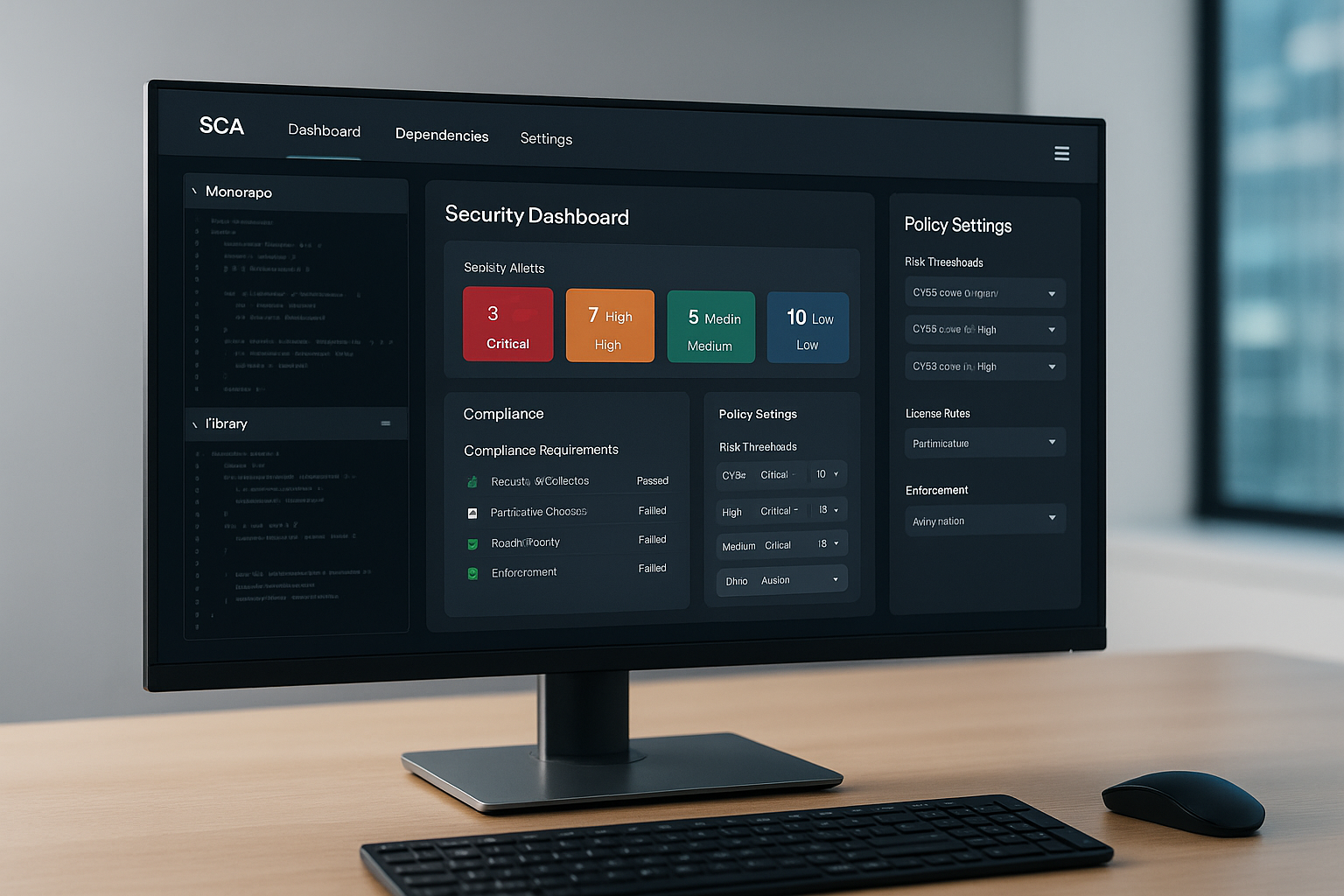When it comes to application security, context is everything. Not every vulnerability poses the same level of risk across different industries. For example, a moderate CVSS vulnerability might be tolerable in a gaming app but completely unacceptable in a fintech platform. That’s why customizing Software Composition Analysis (SCA) tools to enforce industry-specific risk thresholds is crucial for organizations seeking tailored security policies that reflect real-world risk.
In this post, we explore how to configure and optimize SCA tools based on industry-specific compliance needs, risk profiles, and regulatory mandates. We’ll cover key strategies, tooling capabilities, and how platforms like Arnica make this process seamless.
Why Default SCA Configurations Fall Short
Most SCA tools come with pre-configured policies that apply a uniform risk threshold across all applications. While this makes setup quick, it ignores the real-world complexities of modern software environments. These defaults often:
- Treat all CVEs with equal severity, regardless of exploitability in context
- Fail to consider regulatory frameworks like HIPAA, PCI-DSS, or SOX
- Lack the nuance needed to prioritize based on business impact
This approach can overwhelm developers with false positives or irrelevant noise, leading to alert fatigue and slow remediation. Worse, a one-size-fits-all strategy can leave gaps in compliance and governance, especially for organizations operating in highly regulated industries like healthcare, finance, or defense.
Furthermore, standard configurations may not distinguish between development and production environments. What’s acceptable in a staging environment might be unacceptable in a customer-facing app. These nuances matter and demand a more intelligent and adaptable approach.
What Are Industry-Specific Risk Thresholds?
Industry-specific risk thresholds are policies that define which types of vulnerabilities, licenses, or component usages are acceptable in a given industry or business domain. These thresholds help security teams and developers understand what truly matters within their operational context.
Let’s break this down by example:
- Healthcare (HIPAA Compliance): Requires special scrutiny on components handling protected health information (PHI). A CVE affecting a data encryption library may trigger immediate remediation, even with a CVSS score below 7.
- Finance (SOX and GLBA): Financial institutions must adhere to strict data integrity and audit requirements. Risk thresholds may block any third-party packages without a permissive license, regardless of vulnerability severity.
- Retail and E-commerce (PCI-DSS): Any vulnerability affecting payment flows, authentication, or session management needs priority escalation—even if it has not yet been exploited in the wild.
- Government and Defense (FedRAMP, NIST 800-53): Require FIPS-compliant libraries and may ban open-source components not developed in the U.S.
This industry-driven approach makes SCA much more relevant and actionable by aligning security scanning with compliance checklists and business-critical processes.
How to Customize SCA Tools for Industry Compliance
Customizing your SCA setup involves more than toggling a few settings. It’s about translating governance and compliance mandates into enforceable, automated policies in your security pipeline.
1. Define Risk and Compliance Requirements
Start by conducting a cross-functional audit involving security, compliance, and development stakeholders. Identify:
- Applicable regulations (e.g., HIPAA, SOX, PCI-DSS, GDPR, FedRAMP)
- Minimum acceptable CVSS thresholds by application tier
- Acceptable vs. prohibited license types (e.g., MIT, Apache vs. GPL, AGPL)
- Acceptable patch timelines (e.g., 24h for critical, 7d for high, 30d for medium)
- Enforcement scope (development, staging, production)
This documentation will serve as the blueprint for policy creation.
2. Configure Policy Engines in Your SCA Tool
Enterprise-ready tools should allow administrators to create fine-grained policies. With the right configuration, you can:
- Automatically fail builds if a CVE exceeds your industry’s risk tolerance
- Define per-project or per-team license approval workflows
- Customize the impact calculation based on exploit maturity and component usage
- Allow exceptions for legacy dependencies with known mitigations in place
Some tools also allow scoring based on context, such as whether the vulnerable component is reachable at runtime or isolated to dev/test environments.
3. Provide Role-Based Insights
Not everyone in the organization needs the same level of detail. By assigning role-specific views:
- Developers get inline alerts in pull requests with suggested fixes
- Security analysts see trends in vulnerability growth and compliance drift
- Compliance teams receive digestible audit reports aligned with frameworks
This minimizes noise while ensuring that the right people get the right information at the right time.
Pitfalls to Avoid
While the benefits of customizing SCA are clear, organizations must avoid common pitfalls:
- Overblocking: Policies that are too aggressive can frustrate developers and delay releases
- Policy Drift: When enforcement varies across teams or environments, coverage gaps form
- Lack of Governance: Without proper documentation and versioning, audits can become nightmares
- Ignoring Transitive Risks: Failing to analyze indirect dependencies can leave blind spots
To mitigate these issues, regularly audit your SCA policy performance, adjust thresholds based on threat intelligence, and track exceptions with proper justification.
How Arnica Simplifies Risk-Aware SCA
Arnica empowers organizations to go beyond one-size-fits-all SCA with customizable policy engines, rich context awareness, and pipelineless, developer-native workflows
With Arnica, you can:
- Centrally define risk thresholds and license restrictions by project or environment
- Detect real-time violations and automatically trigger alerts or block builds
- Use pipelineless scanning to apply policies outside the CI/CD
- Integrate with your SBOM and DevSecOps tools for full-stack visibility
Our platform helps security teams shift from reactive to proactive risk management.
Ready to Customize Your SCA Strategy?
In today's regulated, risk-sensitive environments, SCA tools must be more than generic vulnerability checkers. They need to be programmable guardians of your industry-specific risk posture.
By customizing your SCA policies around business-critical thresholds, you align security with compliance, reduce false positives, and improve developer adoption.
Book a personalized session with Arnica’s security engineers to explore how we can help you build compliance-aware, risk-aligned software pipelines. Schedule a Call.
Reduce Risk and Accelerate Velocity
Integrate Arnica ChatOps with your development workflow to eliminate risks before they ever reach production.




